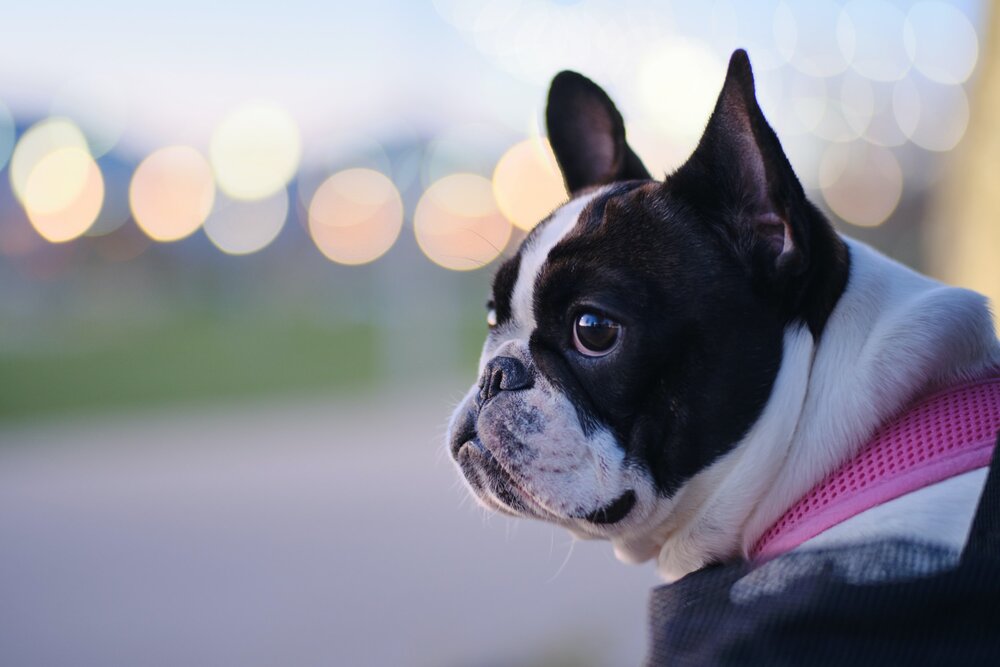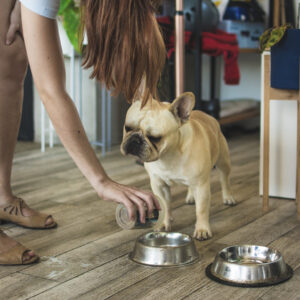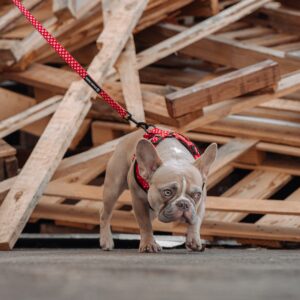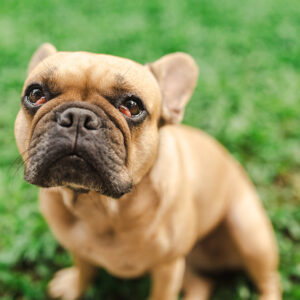Flying with any dog requires a certain amount of consideration, but flying with a Frenchie requires much more. In recent months, there has been much debate surrounding the welfare of brachycephalic breeds during flights after a series of fatal accidents.
While some airlines now have a complete ban on flat-faced breeds, others allow them with certain restrictions. As a traveler, you also have a responsibility to ensure your French Bulldog is healthy and is up-to-date with vaccinations.
Can French Bulldogs Fly on Airplanes?
As a broad answer, yes. Many airlines do permit French Bulldogs to fly on their planes. However, there will be restrictions on the way the dog travels and the length of the flight. Those airlines that do permit Frenchies to fly will ask for a Certificate of Health. This certificate has to be obtained 10 days before the flight, and if you are traveling internationally, you may need other documentation.
10 Tips for Flying With Your French Bulldog
When we travel ourselves, we all have our own checklist of things we do or items we take on board that help to make the flight more comfortable and less stressful. The same is true for dogs. If you are traveling with a French Bulldog, here are 10 handy tips to make the flight easier:
1. Cabin or Cargo?
Ideally, your French Bulldog should always travel in the cabin. Most airlines stipulate that your dog must be in a suitable carrier and stored under your seat. By traveling in the cabin, they are in a pressurized environment and you can see and interact with them during the flight.
Any dog would feel uncomfortable flying, particularly during take-off and landing when there are sudden pressure changes and lots of noise. The cargo hold generally has little to no temperature control, and once at flying altitude, the temperature can be very cold.
2. Choose an appropriate pet carrier.
Although it may be tempting to choose a carrier because it has a cute design, for the purposes of flying, safety is paramount. It is always best to choose a TSA-approved pet carrier.
These carriers are the right dimensions accepted by most airlines and have the required ventilation. If your dog is not able to comfortably turn around or lie down in the carrier, you may not be allowed to travel.
3. Bring Essential Items
Just like we need to remember things like passports, boarding passes, and tickets, we also have essential travel items needed for our dogs. You must have a recent health certificate detailing your dog’s health and vaccination record.
A pet passport is required by law when traveling on any aircraft, both domestic and international. Your Frenchie also needs a pet ticket. They can be purchased directly from the airline at a charge of $100-$250.
4. Have calming remedies
It is not advisable to sedate your Frenchie prior to traveling as the high altitude coupled with the effects of sedation can cause cardiovascular and respiratory issues.
For short-faced breeds, this is particularly risky and can quickly become fatal. A few drops before boarding the plane is enough. Be careful that the bottle does not exceed the 100ml limit for liquids. Natural stress relief remedies can help to calm an anxious traveler and slow their breathing.
5. Make sure your Frenchie gets lots of exercise.
Prior to the flight, make sure your dog has had a good walk with lots of physical exertion. This helps to tire them out and increases the chances of them sleeping during the flight.
It also gives them a chance to go potty, which is especially helpful if your flight is more than 3 or 4 hours.
6. Carrier acclimation
In the weeks leading up to your flight, have your dog enter and exit his carrier at home so he can get used to being inside. Encourage him to lie down and give him treats to strengthen a positive experience.
This will help to reduce his anxiety when it comes time to board the plane.
7. Bring water, treats, and toys
To make the journey more comfortable for your Frenchie, be sure to take these three key items.
A small portable water bottle (less than 100ml unless the airline permits more) so your dog can have a drink. Toys and treats will help to relax him and keep him occupied.
8. Arrive early but board late
Arriving at the airport early gives you more time to let your Frenchie go potty and to have a play to tire them out. When it comes time to board, wait until the end.
You don’t want to fight through the aisle with a pet carrier and the air conditioning isn’t switched on until the engine starts and the plane taxis to the runway.
9. Ask flight attendants if your Frenchie can come out
Airline policy usually states that dogs cannot leave their carrier during the flight, however, some airlines may be lenient on longer flights or if the temperature is particularly high.
Some may say no to letting them out, but they may allow the dog to have their head out of the carrier.
10. Utilize the vents
Direct the air vents towards your dog’s carrier so they are getting a cool breeze during the flight. On larger planes or international flights, there may be vents on the floor as well as above the seats.
As Frenchies have short faces, the air conditioning will help to regulate their breathing and reduce stress.
Which Airlines Accept French Bulldogs?
May airlines still accept French Bulldogs, but most have introduced stricter guidelines to prevent potential health risks. Airlines that still allow brachycephalic breeds include:
- Air Canada
- Air France
- Alaska Airlines (also allow them in cargo hold)
- American Airlines
- Delta
- Emirates
- Hawaiian Air (also allow the in cargo hold)
- Iberia
- Lufthansa
- Qatar
Most UK airlines only allow assistance dogs, while a small number allow pets to travel with restrictions.
Final Thoughts
Flying with your Frenchie does not have to be a worrisome affair, as long as you prepare before you travel. Having a checklist can really help to alleviate pre-flight anxieties for both you and your dog.
The same can be said for the time of day you travel. During warmer weather, traveling early morning or at night is best.
Whether it is a short domestic flight or a longer international journey to visit one of the best pet-friendly places in UK, your French Bulldog should be safe, happy, and relaxed if you follow the guidelines and give yourself plenty of time. Safe travels!




